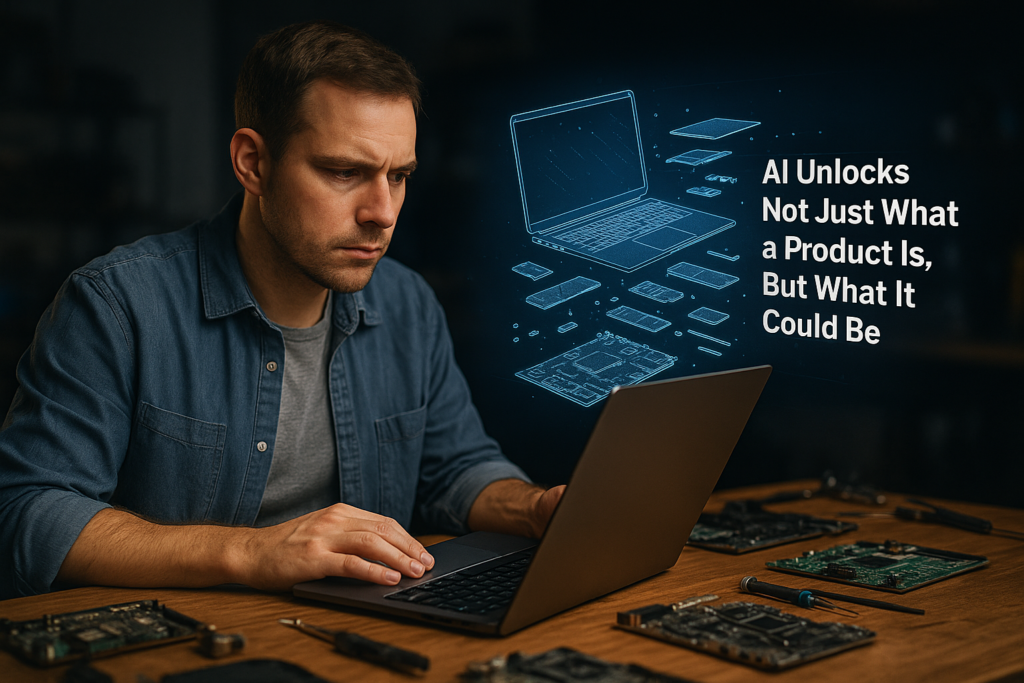In the age of complexity, global supply chains, and mounting regulatory pressure, manufacturers are waking up to a powerful truth: transparency and simplification must start at the Bill of Materials (BOM) — the DNA of every product.
At the heart of this shift is a transformative concept: the Digital Product Passport (DPP) — a living, traceable, and intelligent data layer for every product manufactured, deployed, reused, or recycled. But to build a DPP that is meaningful, actionable, and scalable, manufacturers must begin with a foundational shift: SKU simplification powered by AI and machine learning at the BOM level.
Let’s unpack why.
The BOM is Not Just a List — It’s the Source of Truth
Every screw, chip, board, and screen is encoded in the BOM. Yet for most manufacturers, the BOM is static, buried in silos, and often inconsistent across SKUs, regions, or product generations.
This fragmented view drives:
Redundant SKUs and part proliferation
Inaccurate inventory forecasting
E&O (Excess & Obsolescence) waste
Complicated repair and reverse logistics
Sluggish sustainability reporting
AI and machine learning offer a radical solution: reverse-engineering and normalizing BOMs across all SKUs, transforming tribal knowledge into structured insight. When you unify the BOM landscape, you unlock new visibility — and with it, powerful operational leverage.
SKU Simplification at Scale: Less is More
Using AI to analyze thousands of SKUs across legacy and active product lines, manufacturers can identify:
Overlapping part usage
Design redundancies
Alternative compatible components
Consolidation opportunities based on performance, availability, or lifecycle
This allows companies to dramatically reduce the number of active SKUs, streamline sourcing, lower carrying costs, and increase product modularity — all while improving serviceability and extending the product life cycle.
The result: a leaner, more agile, and more sustainable product architecture.
The Digital Product Passport: BOM-First Traceability
DPP is gaining global momentum — especially in Europe — as regulators, consumers, and circular economy partners demand transparency from cradle to grave. But a DPP built on incomplete or fragmented BOM data is little more than window dressing.
When AI is used to unify and enrich BOM data across SKUs, DPPs evolve into powerful digital assets. A true BOM-first DPP can:
Track material origin, composition, and compliance
Support repair, reuse, and disassembly
Enable CO₂ and ESG reporting
Power marketplace resale and part-matching
Ensure regulatory compliance from the factory to the landfill (or second life)
This isn’t just about better records — it’s about building resilience into the product itself.
Circular Economy, Meet AI
The circular economy is built on a powerful principle: products are not waste — they are reservoirs of future value. But unlocking that value requires something manufacturers have traditionally lacked: a real-time, intelligent understanding of what each product is made of, where it exists in its lifecycle, and how it can be reused, repaired, or reimagined.
This is where AI, BOM simplification, and the Digital Product Passport (DPP) converge to reshape the entire manufacturing value chain — not just from a sustainability lens, but from a deeply economic one.
Here’s how this intersection gives rise to entirely new business models:
1. Repairability Scores Driven by Real-Time Part Availability
Traditional repairability scores are static and generalized. They don’t consider whether a part is available, affordable, or easily swappable — all critical factors for practical repair.
When AI maps BOM components across SKUs and links them to global inventory data, manufacturers can now generate dynamic, SKU-specific repairability scores that factor in:
Part compatibility
Open-market availability
Geographic proximity to service hubs
Likelihood of long-term support
This not only empowers service centers and consumers, but also supports compliance with emerging “Right to Repair” laws.
2. White-Label Product Assembly from Surplus Parts
By applying AI to unify BOMs across product generations, manufacturers can see — often for the first time — how many complete or near-complete devices can be built from surplus, overstock, or E&O inventory.
Rather than scrapping these components, companies can:
Assemble white-label or budget-tier devices under secondary brands
Provide low-cost solutions for education, emerging markets, or NGOs
Reduce landfill contributions while monetizing existing sunk costs
This enables a new manufacturing stream without traditional R&D, tooling, or sourcing overhead — a near-zero marginal cost line of business fueled by past inventory.
3. Inventory Resale into Global Secondary Markets
With BOM-level clarity and AI-powered part mapping, manufacturers can finally engage the secondary market with intelligence, not guesswork.
AI identifies which components still have market demand, what devices they fit, and how they can be bundled, certified, or remarketed. This drives:
Direct-to-market resale strategies
Partnerships with certified repairers or resellers
Tiered pricing strategies based on lifecycle and geographic demand
Custom kitting of “upgrade packs” or maintenance kits
Instead of writing down E&O inventory, companies create new revenue streams while fueling the repair economy.
4. End-of-Life Planning with Real Financial Recovery Models
AI doesn’t just help at the beginning of the product’s life — it shines at the end. BOM-level intelligence enables manufacturers to evaluate:
Which parts can be recovered, reused, or recycled
The material value of each unit at the point of return
Labor and logistics trade-offs in reverse supply chains
Opportunities for buyback or trade-in programs
This shifts end-of-life planning from an environmental obligation to a strategic financial recovery operation, complete with predictive models for optimizing returns.
AI Unlocks Not Just What a Product Is, But What It Could Be
The BOM — when enriched with AI — becomes a living, breathing asset. It tells a story far beyond manufacturing specs. It answers:
Can this device be rebuilt?
Where is this part still in demand?
How should we route this return?
What’s the residual value at component level?
How can we enable local economies through repair and reuse?
In this model, a product’s life doesn’t end with the sale — it evolves. It becomes modular. Traceable. Redeployable. It becomes part of an intelligent circular system that rewards foresight, data, and innovation.

